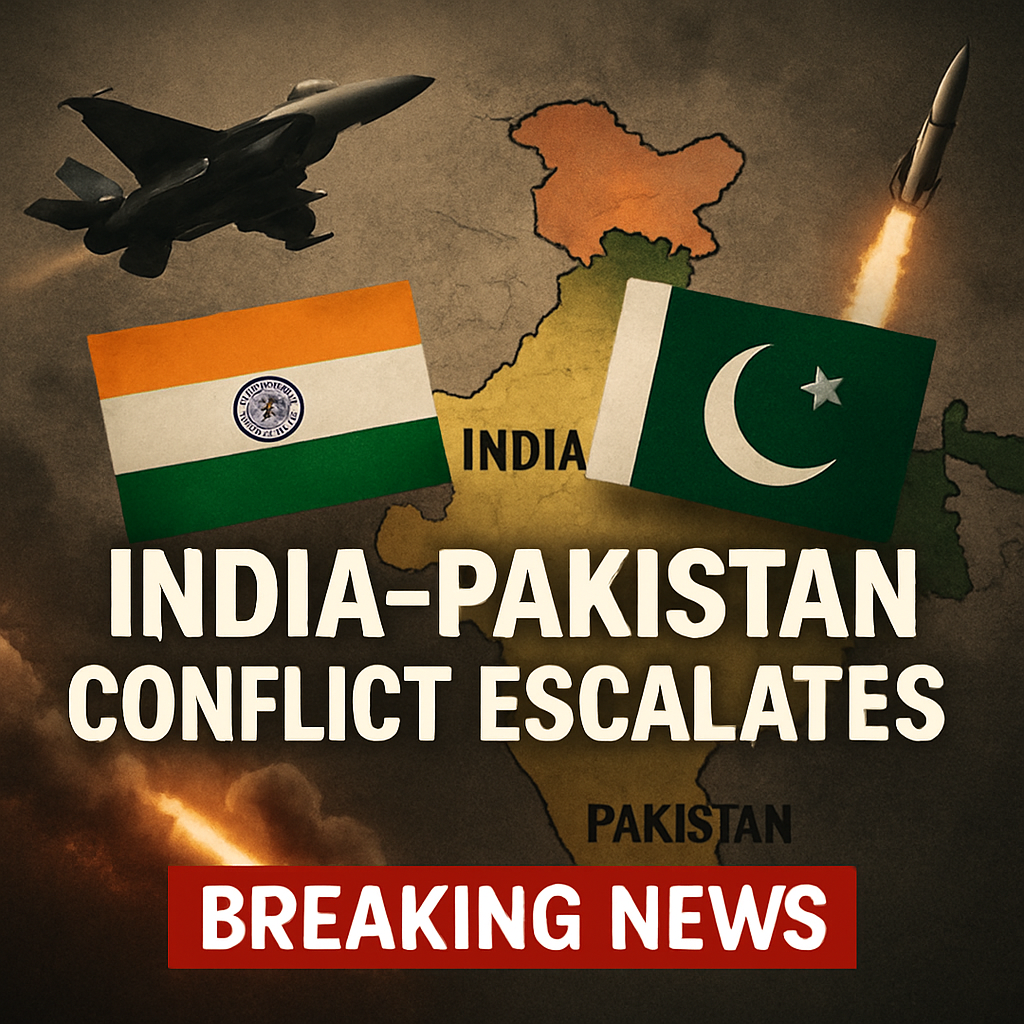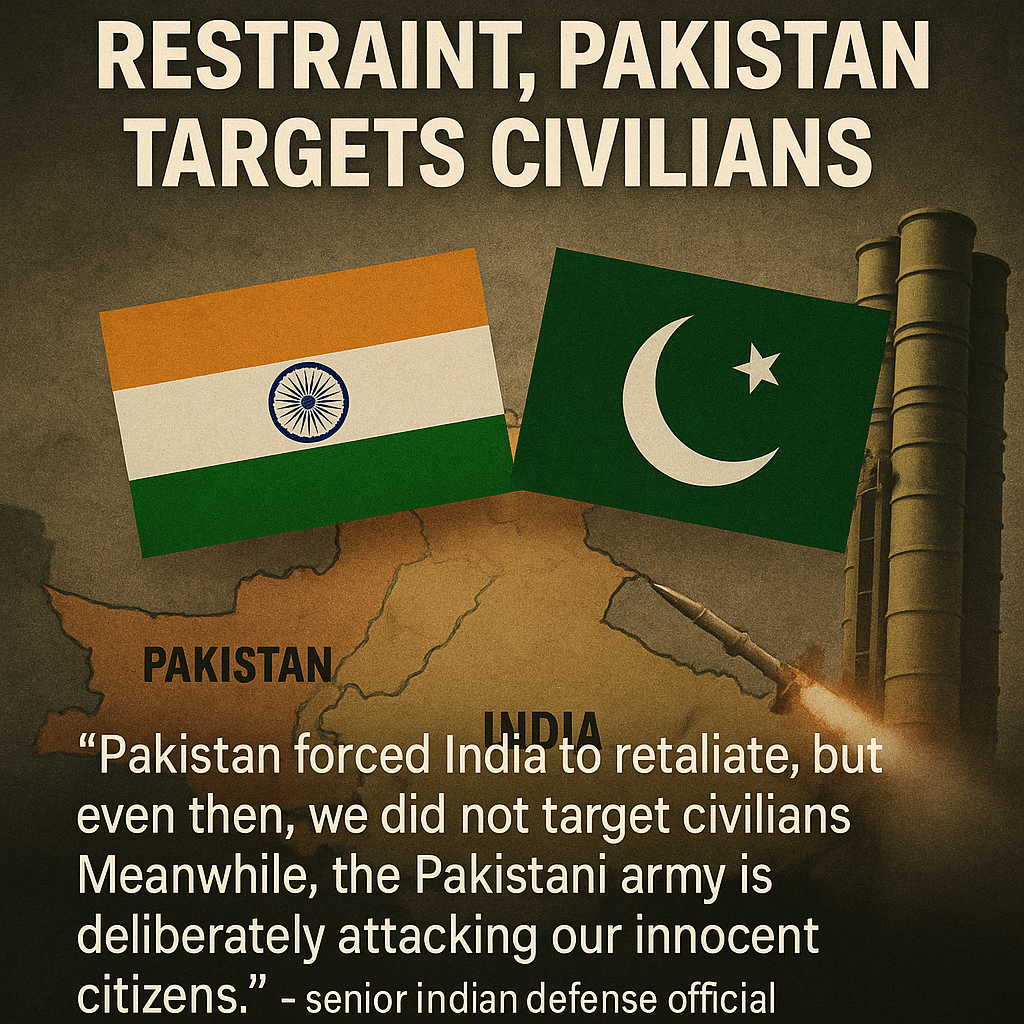Get the full story behind India ka Operation Sindoor, Pakistan’s retaliation, border tensions, and what this means for South Asia’s future.

Introduction: Tensions Ignite Again
India and Pakistan, two nuclear-armed neighbors with a long history of hostility, have once again found themselves on the brink of a large-scale conflict. The trigger this time is Operation Sindoor, a bold retaliatory move by India in response to a brutal terrorist attack in Pahalgam, Jammu & Kashmir, which claimed the lives of 28 innocent Hindu tourists on April 22, 2025. What began as a counterterror operation has now turned into a dangerous exchange of military fire across the Line of Control and international border.
Operation Sindoor: India Strikes Back
The Catalyst: April 22 Pahalgam Attack
On a peaceful day in April, tragedy struck in Pahalgam, a popular tourist destination in Kashmir. A group of armed terrorists opened fire on a convoy of Hindu pilgrims, killing 28 and injuring dozens more. The horrifying incident sent shockwaves across the country, with nationwide protests demanding swift justice and retribution.
The Indian government, under immense public and political pressure, vowed to respond firmly. Within days, intelligence agencies traced the attackers to terrorist training camps operating from Pakistan-occupied Kashmir (PoK) and parts of mainland Pakistan.
Launch of Operation Sindoor
In the early hours of May 7, the Indian Armed Forces launched Operation Sindoor and targeted multiple terror hideouts across PoK and deep inside Pakistani territory.
They carried out precision airstrikes and coordinated drone attacks in areas like Muzaffarabad, Kotli, and Balakot. The operation directly warned Pakistan that India would no longer tolerate cross-border terrorism.
Defense establishment sources claim that Indian forces neutralized over 75 militants and destroyed several launch pads
Pakistan Retaliates: Escalation Along the Border
Drone and Missile Attacks by Pakistan
In a swift and aggressive counter, Pakistan launched a series of drone and missile attacks across India’s western frontier. Cities and military installations in Punjab, Rajasthan, and Gujarat witnessed missile sirens, anti-aircraft gunfire, and drone interceptions.
This is being described by defense experts as the most serious escalation between the two nations since the 1999 Kargil War.

According to official reports, at least 12 drones attempted to enter Indian airspace.
While most were shot down by the Indian Air Force (IAF) using S-400 missile defense systems, a few managed to strike military supply depots near the border, causing minor damage.
India Responds with Restraint, Pakistan Targets Civilians
“Pakistan forced India to retaliate, but even then, we did not target civilians. Meanwhile, the Pakistani army is deliberately attacking our innocent citizens,” said a senior Indian defense official.
India emphasized that its operations under Operation Sindoor were carefully planned to avoid civilian casualties, focusing solely on terrorist infrastructure. In contrast, Pakistan’s retaliatory strikes have reportedly hit civilian-populated areas near the border.
The Indian Air Force confirmed that its S-400 missile defense system successfully intercepted and destroyed several Pakistani drones and missile threats mid-air, preventing major damage and loss of life.
Claims and Counterclaims
Pakistan’s military spokesperson claimed to have downed three Indian fighter jets and destroyed an ammunition depot in Punjab. India, however, dismissed these claims as propaganda, asserting that no Indian aircraft was lost, and all strategic assets remained intact.
The fog of war is thick, and while both nations issue conflicting statements, what is clear is that lives have been lost, infrastructure damaged, and the possibility of further escalation looms large.
Civilian Life Disrupted
Evacuations and School Closures
As shelling and aerial threats intensified, thousands of people living in border districts were evacuated to makeshift shelters and military camps. Schools in Amritsar, Gurdaspur, Jaisalmer, and Barmer have been ordered shut until further notice. Civil defense teams have been deployed to educate villagers on air raid protocols and emergency safety measures.
Farmers in the region, just beginning the wheat harvest, have abandoned their fields. The fear of war has cast a long shadow over normal life.
Humanitarian Crisis in the Making?
Local NGOs and volunteers report growing concerns over food shortages, medical access, and psychological trauma among displaced families. “This situation is eerily similar to what we saw during Kargil,” said a Red Cross volunteer in Punjab. “Only this time, the weapons are more advanced, and the stakes are much higher.”
High-Level Military and Diplomatic Activity
Rajnath Singh Chairs Emergency Defense Meeting
As the situation spiraled, India’s Defense Minister Rajnath Singh convened an emergency meeting with the Chiefs of the Army, Navy, and Air Force. Sources indicate that strategies for escalation control, civilian protection, and a potential diplomatic outreach were discussed.
Prime Minister Narendra Modi also held a late-night briefing with the National Security Advisor (NSA) and Cabinet Committee on Security (CCS), urging the forces to maintain high alert while exploring all options to prevent full-scale war.
Diplomatic Channels on Standby
Despite the aggression, backchannel diplomacy has not entirely broken down. Unconfirmed reports suggest that both nations have kept hotlines between Directors General of Military Operations (DGMOs) active to avoid miscalculations.
International players like the United States, Russia, and the United Nations have urged both sides to de-escalate and return to the negotiating table. China, however, has remained largely silent, adding to regional anxieties.
The Bigger Picture: Why This Conflict Matters
History Repeats?
India and Pakistan have fought three major wars and numerous skirmishes since their independence in 1947. The root cause remains the dispute over Kashmir. Though previous governments from both sides attempted peace talks, these efforts have often collapsed under the weight of terror attacks and mutual distrust.
What makes this situation alarming is the nuclear capability of both countries. Even a limited war could have global repercussions—economic, political, and humanitarian.
Impact on Economy and Markets
The escalating conflict has already spooked financial markets. The Sensex of pakistan saw sharp declines, and the pakistani rupee dipped against major currencies. Foreign investors are reportedly pulling back on planned investments, and gold prices have surged due to fear-driven demand.
If the standoff continues, the Indian economy—still recovering from global recessionary pressures—could face major setbacks.
What Lies Ahead?
Hope for De-escalation?

Despite the current tension, many believe that full-scale war is unlikely, given the enormous costs on both sides. Political analysts argue that both governments are aware of the global and domestic consequences of prolonged military conflict.
There is still room for dialogue, especially if third-party nations step in to mediate a ceasefire and push for peace talks.
Citizens Want Peace, Not War
Across social media and public forums, the message from both ordinary india and Pakistanis is loud and clear: “We want peace, not bloodshed.” While patriotism runs high, so does the fear of losing loved ones and livelihoods. People on both sides remember the horrors of past wars and are praying that sanity prevails over sabre-rattling.
Conclusion: A Crucial Crossroads
India and Pakistan stand at a critical juncture. One path leads to diplomacy, restraint, and regional stability. The other leads to war, chaos, and irreversible loss. As the world watches, the hope is that both nations will choose dialogue over destruction.
The next few days will be crucial in determining whether this current conflict becomes just another skirmish—or a tragic chapter in the history of South Asia.
